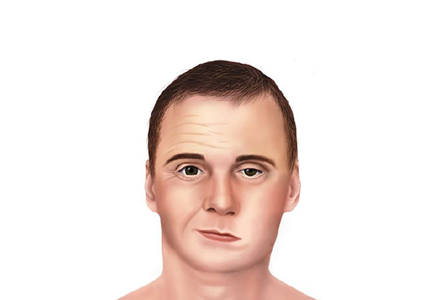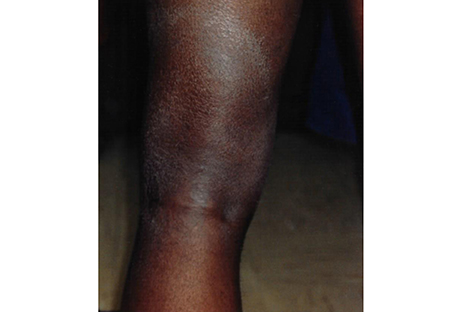Stages of Lyme disease and their common symptoms

Getty Images
If you have already been diagnosed with Lyme disease, learning about Lyme disease stages can help you know what symptoms you might experience. You’ll also be able to watch for signs that could mean that your Lyme disease has progressed. Lyme disease symptoms are more likely to progress if you have not been appropriately treated.
If you don’t have a Lyme disease diagnosis, it’s helpful to know that Lyme disease can cause a variety of seemingly unrelated symptoms throughout your body. If you develop symptoms listed below, especially after you’ve gotten a tick bite or spent time in an area where Lyme disease is common, you can ask your doctor whether you might have Lyme disease and if you should be tested for it. (For more information, see Diagnosis and Testing).
There are three stages of Lyme disease. Early localized, or Stage 1, Lyme disease occurs soon after being infected, when the Lyme disease bacteria are still close to the site of the tick bite. Common symptoms of early localized Lyme disease include a rash or mild, flulike symptoms. Over time the Lyme disease bacteria can spread, or disseminate, to other parts of the body, causing more serious symptoms associated with early disseminated (Stage 2) or late disseminated (Stage 3) Lyme disease. This is more likely if you are not diagnosed and treated early.
While Lyme disease stages and associated symptoms tend to develop on the timeline described below, symptoms can appear earlier. Lyme disease stages can also overlap, and not everyone experiences all stages, or all symptoms of each stage. For example, a person might get diagnosed and treated in Stage 1, and never experience Stages 2 or 3. Or someone might develop Stage 3 symptoms months or years after a tick bite, without ever having had or noticed symptoms of early infection.
“I never had the classic bullseye rash.”
Lyme Disease Patient Experience Survey Respondent
Male, 34, Ayer, MA
Stage 1: Early localized Lyme disease

Getty Images
Timing: Within days or up to one month after a tick bite
Common symptoms include:
- Rash, known as an erythema migrans (EM) rash. The rash often has a bullseye or target-like shape. However, it can also be a solid red, expanding rash of a different shape. (See sidebar, “Not all Lyme disease rashes look like bullseyes.”) Migrans means spreading, and an important characteristic of an EM rash is that it expands over time. EM rash only occurs in people with Lyme disease. However, up to 30% of people with Lyme disease never develop or notice an EM rash.
- Fatigue, malaise, and lethargy (you might feel like you have the flu)
- Muscle or joint pain that moves around (is migratory). That means you might feel it in different places on different days. Typically, no redness or swelling accompanies the pain.
- Loss of appetite
- Swollen lymph nodes. Lymph nodes, which contain immune cells that help fight infection, are located throughout your body, including your neck and armpits. You may notice swollen lymph nodes anywhere on your body, not just near the area of your tick bite.
- Fever.
Not all Lyme disease rashes look like bullseyes

Although most Lyme disease rashes are shaped like bullseyes, not all are. For example, they can also be solid or blotchy in an oval or circular shape. And while most Lyme disease rashes are red, some may have a bluish-purple hue. Some Lyme disease rashes develop blisters or a crust.
It’s also important to know that Lyme disease rashes can look different on different shades of skin. The bullseye pattern may be less visible on darker skin, for example. And the rash itself may look darker on dark skin, and not as obviously red as it might against lighter skin.
Stage 2: Early disseminated Lyme disease
Timing: Weeks to months after a tick bite
In early disseminated Lyme disease, the infection has started to move beyond the site of your tick bite to other parts of your body such as your heart, brain, or spinal cord. Lyme disease that has moved to the brain is sometimes referred to as Lyme neuroborreliosis, or neurological Lyme disease.
Common symptoms of early disseminated Lyme disease include:
- More than one EM rash (a sign very suggestive of Lyme disease)
- Pain that may come and go and move around the body, in joints, tendons, muscles, and bones
- Inflammation of the brain and spinal cord (meningitis), which can cause severe headache, neck stiffness, and sensitivity to light and sound
- Numbness, weakness, or tingling in the arms and legs (radiculoneuritis)
- Weakness or drooping on one or both sides of the face; difficulty closing an eyelid (facial palsy)
- Inflammation of the heart (carditis) that can cause heart palpitations, irregular heartbeat, dizziness, shortness of breath, or fainting. If you are experiencing any of these heart symptoms, seek immediate medical care.
You may also experience a worsening of earlier Lyme disease symptoms.

Getty Images

Getty Images

CDC
Stage 3: Late disseminated Lyme disease
Timing: Months to years after a tick bite
The infection can spread to the joints or contribute to altered brain function, a condition known as encephalopathy.
Common symptoms of late disseminated Lyme disease include:
- Arthritis with joint pain, warmth, and swelling that may be constant or come and go. Lyme disease-related arthritis typically occurs in one joint, usually the knee or another large joint, though it can also occur in more than one joint.
- Concentration issues, brain fog, and memory issues
- Nerve pain that feels like tingling, numbness, burning, or stabbing in the hands and feet (peripheral neuropathy)
- Anxiety, depression, mood swings, and other neuropsychiatric issues
- Sleep disturbances such as difficulty falling or staying asleep, need for extended sleep, or unrefreshing sleep.
You may also experience a worsening of earlier Lyme disease symptoms.

Getty Images

Getty Images
When symptoms persist
Some people experience Lyme disease symptoms for a long time. Like COVID-19 and myalgic encephalomyelitis/chronic fatigue syndrome (ME/CFS), Lyme disease can cause long-term, potentially life-altering symptoms. Researchers are exploring different theories for why Lyme disease symptoms might persist, including immune system dysregulation, damage to nerve pathways, and lingering infection. For more information, see Persistent Symptoms of Lyme Disease.
Characteristics and outcome of facial nerve palsy from Lyme neuroborreliosis in the United States. Annals of Clinical and Translational Neurology, January 2022.
https://pubmed.ncbi.nlm.nih.gov/35064770/
Clinical manifestations of Lyme disease in adults. UpToDate, April 2022.
https://www.uptodate.com/contents/clinical-manifestations-of-lyme-disease-in-adults
Conquering Lyme Disease: Science Bridges the Great Divide. Columbia University Press, 2018.
https://www.columbia-lyme.org/conquering-lyme-disease-science-bridges-great-divide
Lyme borreliosis. Nature Reviews Disease Primers, December 2016.
https://pubmed.ncbi.nlm.nih.gov/27976670/
Lyme disease. CDC website, January 2022.
https://www.cdc.gov/lyme/
Nervous system Lyme disease. UpToDate, April 2022.
https://www.uptodate.com/contents/nervous-system-lyme-disease
Neuropsychiatric Lyme Borreliosis: An overview with a focus on a specialty psychiatrist’s clinical practice. Healthcare, August 2018.
https://pubmed.ncbi.nlm.nih.gov/30149626/
Recent progress in Lyme disease and remaining challenges. Frontiers in Medicine, 2021.
https://pubmed.ncbi.nlm.nih.gov/34485323/
Signs and symptoms of untreated Lyme disease. CDC website, January 2021.
https://www.cdc.gov/lyme/signs_symptoms/index.html
Tickborne diseases of the United States: A reference manual for health care providers. National Center for Emerging and Zoonotic Infectious Diseases (U.S.), 2017.
https://stacks.cdc.gov/view/cdc/55837






